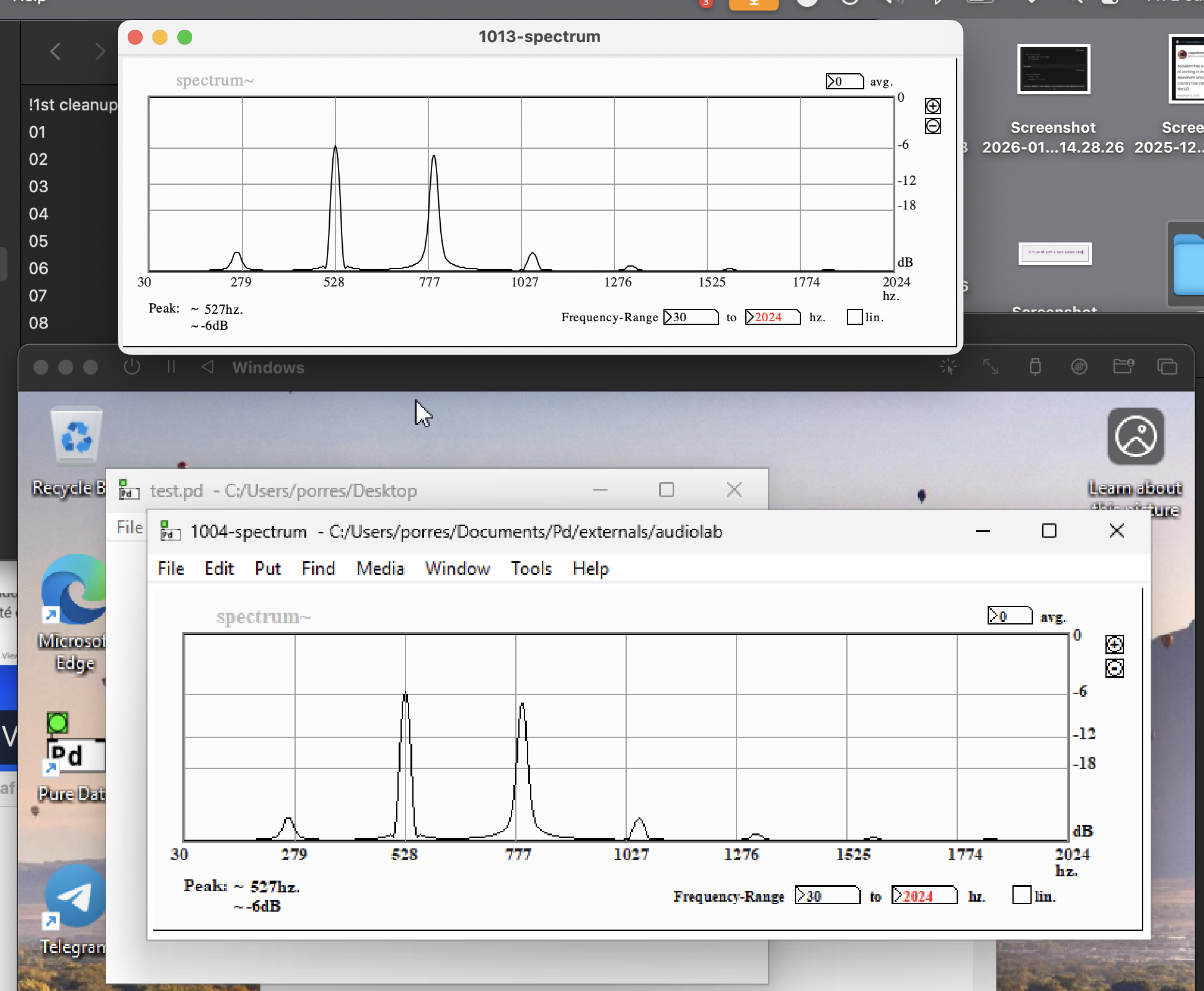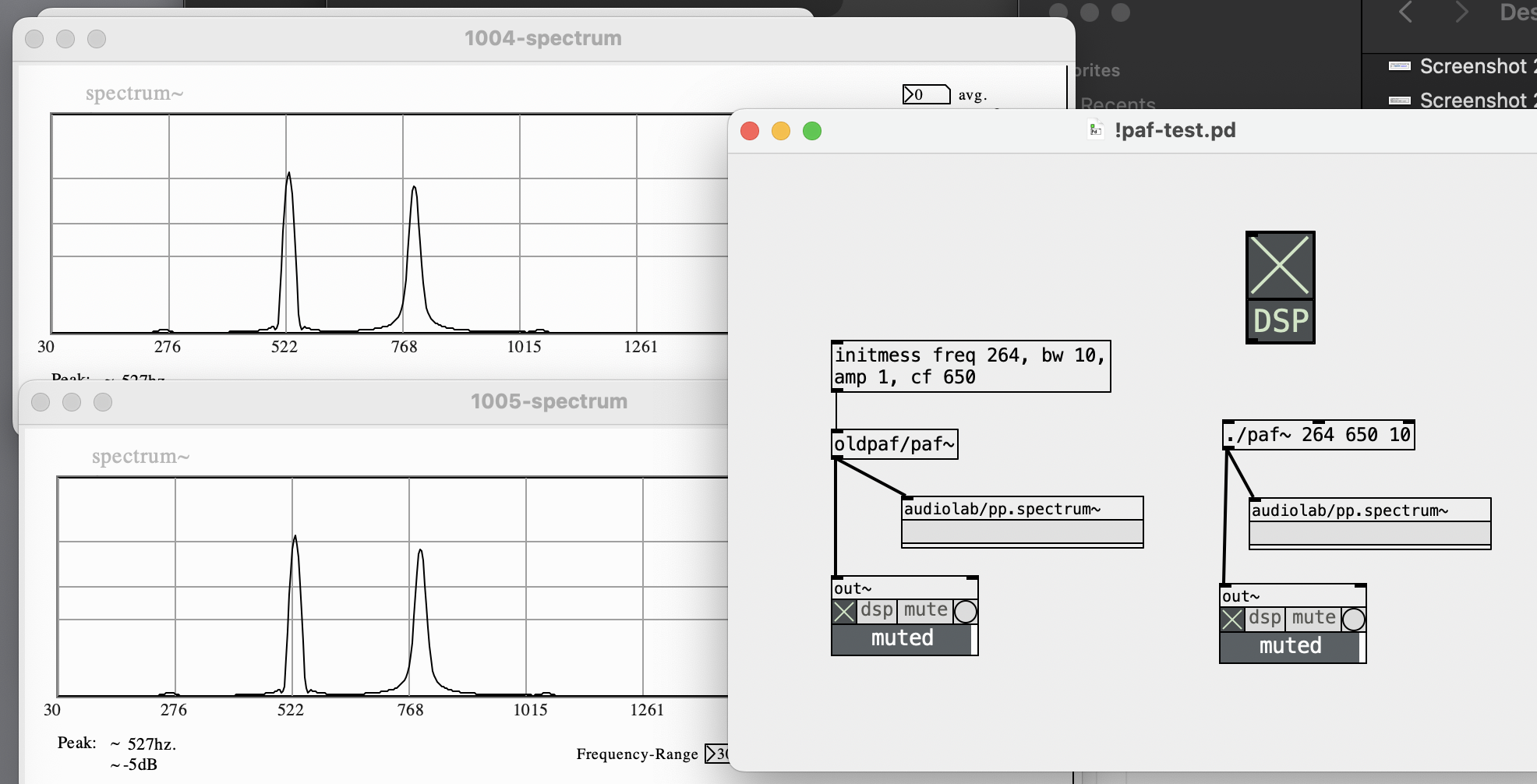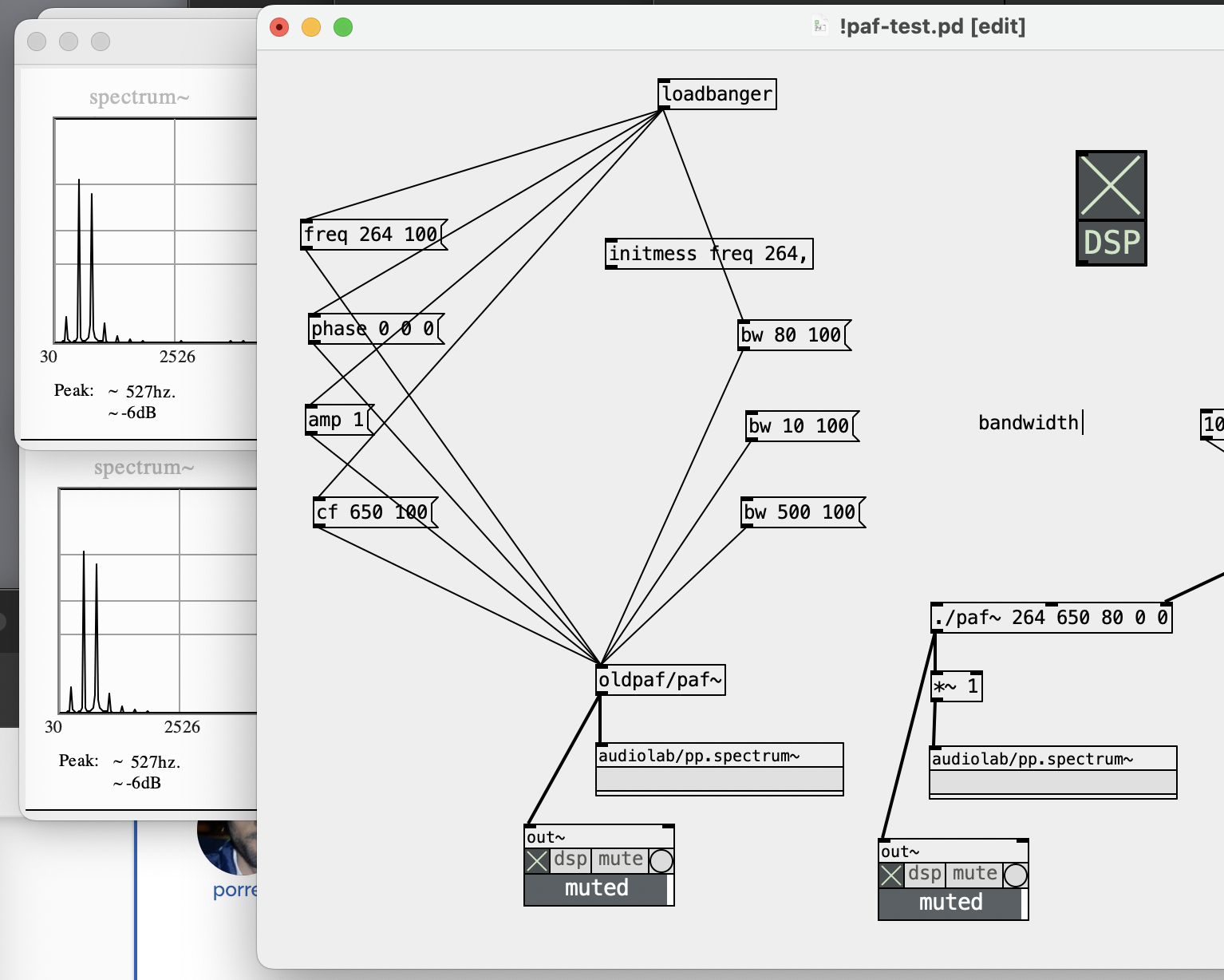-
porres
posted in technical issues • read moreFor the record, formant~ was now also added, so I have formlet~, formant~, vosim~ and paf~ (all with multichannel support) already inclued into ELSE, and I'm gonna stop here for the time being...
-
porres
posted in technical issues • read more@ddw_music Thanks for the clearer explanation.
To reiterate: the code is exactly the same on any OS. That was the point of my question “what Windows code?” — to indicate that there is no such distinction. I was not asking anyone to debug my code. I was asking for a more careful identification of the actual issue, rather than assumptions about OS-specific behavior that does not exist here.
If you're gonna claim something, you gotta have something to back it up...
I don’t have access to Windows. I haven’t used it for over two decades. This is volunteer work, and I would expect a minimum level of respect and collaboration instead of being blamed because early, experimental code is not yet working on Windows.
Making confused claims without being able to properly test or report the issue is not helpful. It did not feel to me like there was an intent in trying to help; it felt like complaining, while also stating I shouldn't expect people to debug the code for me...
If there is no interest in helping—and not even in supporting the work financially—then it’s better to disengage. So yes, sorry if I wasn’t patient enough in my explanation.
And the most incredible confusion here was to assume I had a different algorithm that wasn't supposed to be called "paf", which was "invented by someone else" (who cares anyway?). So, to be cristal clear, this was simply a bug on windows where, for some obscure reason outside of my reach, the compiled code behaved differently. This was supposed to be evident when I, for multiple times, proved that the object was working as intended on macOS. So it was clearly the same technique/algorithm.
Having said all that, I’ve now implemented multichannel support in the object and asked an AI for hints about potential cross-platform issues. I made a few changes and tested them on a virtual machine, and everything now seems to work.
I honestly don’t know what, if anything, actually fixed the problem. I didn’t really touch the paf source code itself; I only made some minor changes to the buffer.c dependency.
see https://github.com/porres/pd-else/actions/runs/20669314244
And a screenshot

-
porres
posted in technical issues • read more@jamcultur said:
Don't you care whether it works properly on Windows?
I do and, like I said... I WILL GET TO THAT LIKE I SAID... AS THERE'S NOTHING TO BE DONE NOW... can you take a moment to breathe and read carefully what I've been saying?
I don't feel you're not listening... you're also not being very helpful...
you're being very annoying actually and saying some funny and wild things by the way
 like what I should do and how I should call the object.
like what I should do and how I should call the object.Let me put it in a different way and be done with this. Right now I actually don't care this is not working for you! The object is still not included officially. It is still experimental and not officially distributed. It is not even completed... So you're gonna have to leave me alone please for the time being, unless you can really help. If you can't, leave me alone please... I see it's not working for you, I got it. Like I said a million times, I have no idea what might be going on... ok? Can we move on?
thanks
-
porres
posted in technical issues • read more@jamcultur said:
If the code on Windows was the same as the code on Mac,
why don't you look at the code and point to what you believe is the culprit instead of just making assumptions. My code is the same for mac, windows and linux... I said so. There's no code just for windows. I can't see why it would compile differently for windows as well, which is something else to consider... and this would mean that probably a lot of ELSE objects behave different on windows, maybe, and I think it's unlikely...
anyway, we can't go around in circles forever so I am moving on with this already, like I said... for now, all I can say is "I can't see what might be causing this", and "I can't reproduce it"... and "this is still experimental and I don't have to do something about it just now when we don't have a clue of what is going on, so let's put a pin on that"
-
-
porres
posted in technical issues • read morea comparison of miller's original paf (version 0.07), an abstraction based on F13 and my external. The abstraction is the one at the top and differs a bit. My external matches exactly miller's original and it's actually based on it so it's the same code...
we have to stop going around in circles here...
I see you're getting different results on windows. Makes no sense to me, I don't believe there's something in the code. Unless you have a real suggestion and can narrow something down of find the problem, I can't do anything.
I say let's just put a pin on this...
The object isn't even officially included or done. Let me work on it... when it's time to put the update release out I will have a look at it. Try to run on a VM or something.
-
porres
posted in technical issues • read more@jamcultur said:
I made a module using the implementation of paf~
what kind of "module"? How did you "do it"?
please be precise
-
porres
posted in technical issues • read more@jamcultur said:
There is different code running on Windows than on Mac. That must be where the problem is.
what exactly do you mean?
-
porres
posted in technical issues • read moreOh, I misread your post... at least adding to the path makes no difference as I thought (cause it makes no sense).
One way or another, it's still hard for me to believe something is funny, because I simply cannot reproduce as I've shown many times and it also makes no sense to me that it would behave differently on windows...
-
porres
posted in technical issues • read moreGreat! No idea what that was needed, but I guess it's not important now.
Next, I'm adding Multichhanel support like my other oscillators, and it'll be easy to add more formants that way with a single object.
-
porres
posted in technical issues • read morecan you confirm this is from the patch I sent? Did you change it?
why didn't you stick to the same parameters I sent with bandwidth = 10, wasn't that showing more changes?
Anyway, same patch, now with bw = 80, same visual results. I don't think this has nothing to do with you being on windows... it just seems the top one stuck with bw = 10....

the patch now with bw = 80!
-
porres
posted in technical issues • read more@jamcultur said:
What OS are you using?
masOS Sequoia 15.7 - but I doubt this makes a difference
I don't add externals to Pd's path. Does else/paf~ expect to find something in the path?
not really, if you don't have errors, it's fine
I had to multiply else/paf~'s output by 1.3 to match the level of Puckette's paf~. Is that the same for you?
no, you can see the screenshot above and the patch. You can get it and show me a screenshot of what you see
-
porres
posted in technical issues • read morenope, well, I guess we'll have to wait til the next year to deal with this

-
porres
posted in technical issues • read morewell, can you send the patch again?
this is what I have... with a bandwidth of 10... looks the same, sounds the same! I really cannot reproduce and confirm what you're saying.

the patch:
-
porres
posted in technical issues • read moreok, looking closely with my glasses on, I can see the top one having a bit more spectral floor noise, but I can't hear it...
-
porres
posted in technical issues • read morewell, it looks and sounds the same here with an amp of '1'...

-
porres
posted in technical issues • read moregeez... you have an amp value of '100', it should be '1'

-
porres
posted in technical issues • read moreWhat I can tell you is that there's no audible difference for me over here. I have all literally dozens iterations of code changes/overhaul from Miller's original code. Testing the original and my latest version basically sounds the same. But I haven't put it into the test like you with a deep spectral analysis
-
-
porres
posted in technical issues • read morewe're back to cosines in https://github.com/porres/pd-else/actions/runs/20608031480

